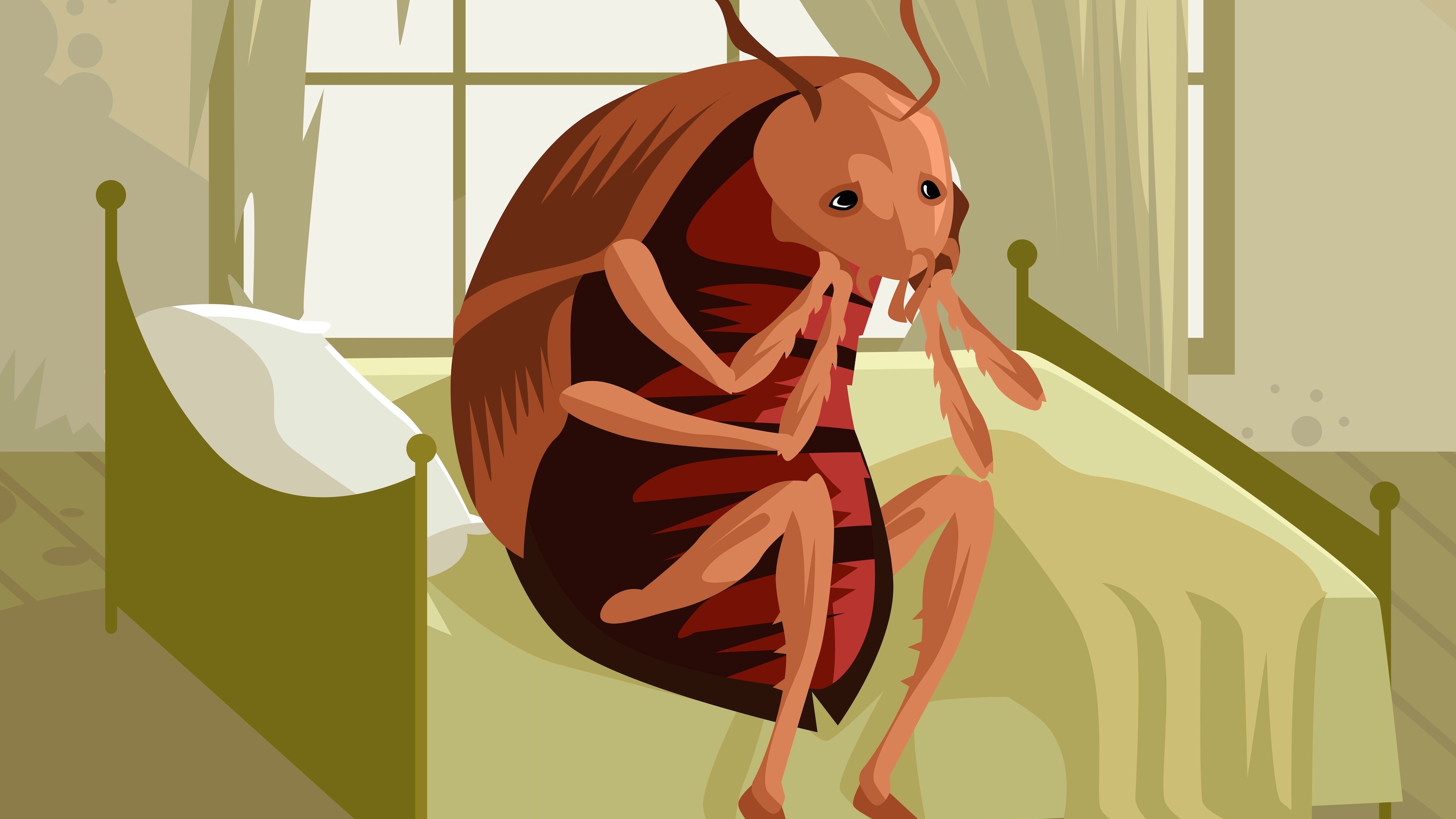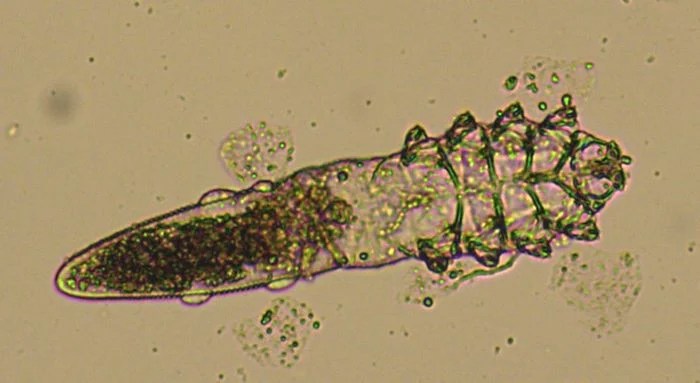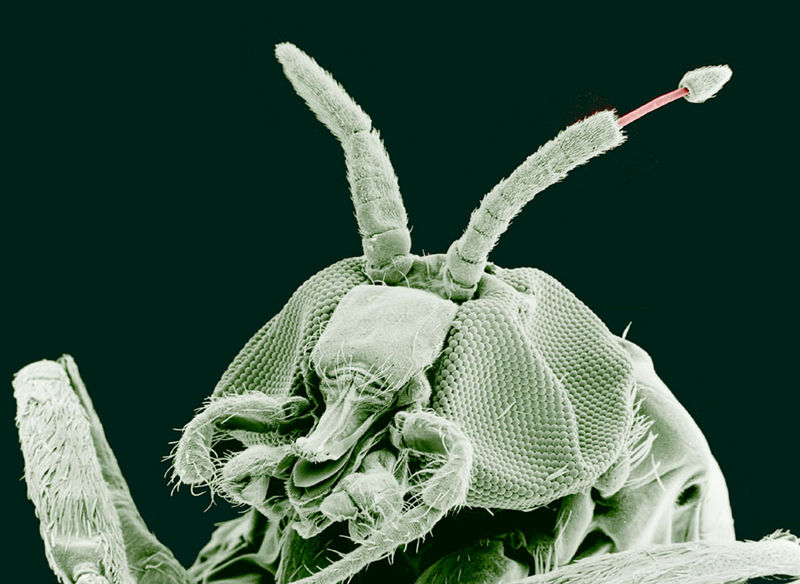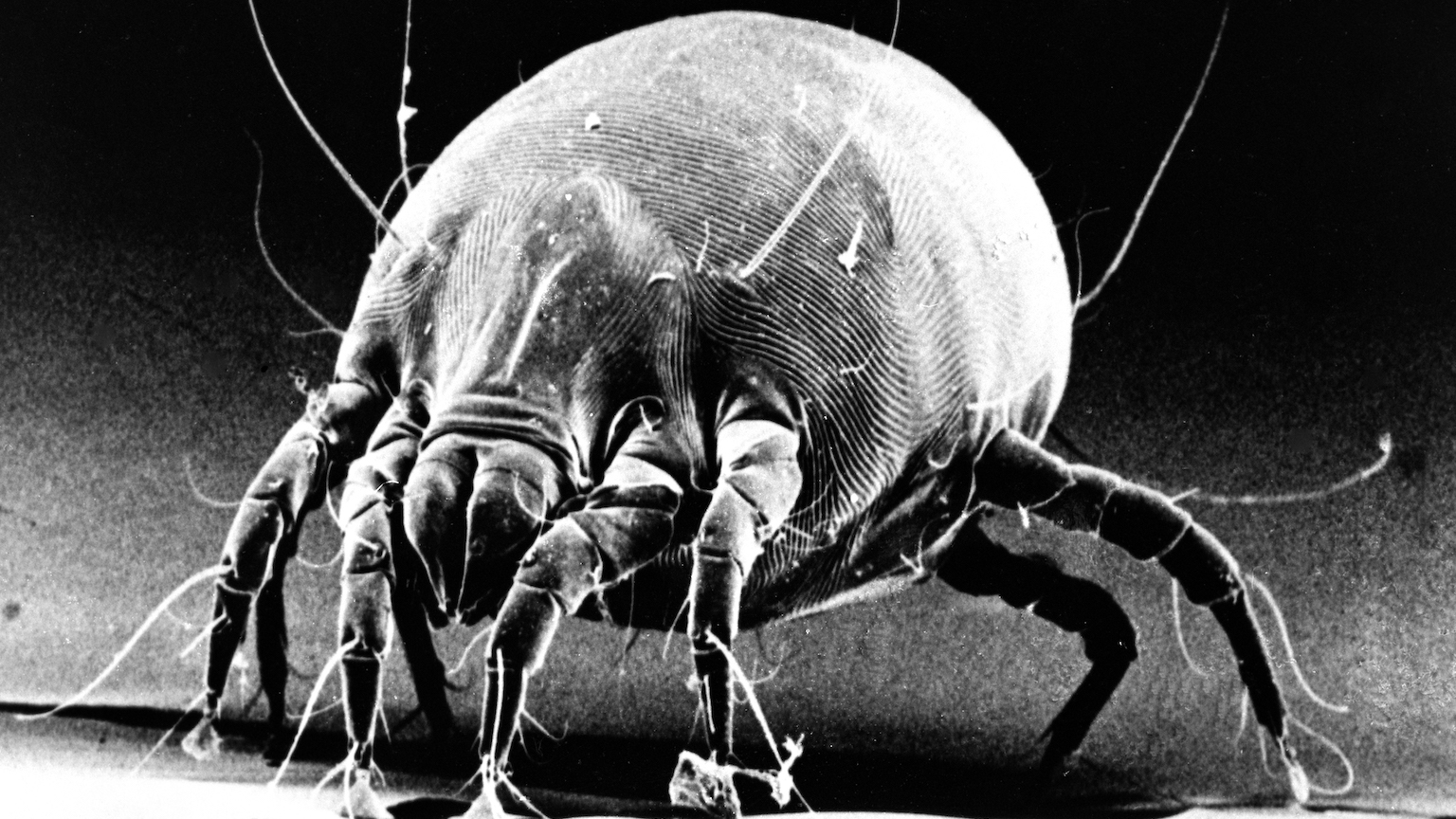The Metamorphosis in real life: Mites that live on our faces might be merging with us

- The vast majority of human faces are home to minuscule skin mites (Demodex folliculorum) that live in our hair follicles.
- Researchers sequenced the mite's genome for the first time and found that it appears to be losing important genes.
- As a result of the mites' easy lifestyle, it seems they are becoming totally reliant on humans to survive. This could lead them to die off or to potentially merge with us.
In Franz Kafka’s novella The Metamorphosis, the protagonist Gregor Samsa transforms one morning into an Ungeziefer (“vermin”), universally depicted as a cockroach. Though far less dramatic, it could be the case that humanity as a whole is “merging” with the mites that live on our faces — a slow-motion metamorphosis, so to speak.
The mites on your face
Chances are good — very good — that your face is home to an army of minuscule mites. Demodex folliculorum dwell on more than 90% of humans. Over their roughly three-week lifespan, the 0.3-millimeter-long arachnids shack up in hair follicles, sipping on the oily sebum produced by sebaceous glands and munching on dead skin matter. Face mites are typically transferred from mother to child during breastfeeding. Apart from causing autoimmune reactions in exceedingly rare circumstances, they are completely harmless, and are often considered beneficial.
“They’re very tiny and cute. There’s nothing to be concerned about having them. They clean our pores and keep them flat,” Alejandra Perotti, an Associate Professor in Invertebrate Biology at the University of Reading, told BBC Radio.

Perotti is one of the world’s few experts in acarology, the study of mites and ticks. She’s also one of the principal authors on a recently published study exploring whether face mites are evolving to become obligate symbionts with humans, meaning that they would become completely dependent upon us to live while also conferring benefits.
The incredible shrinking mite
She and her colleagues, hailing from institutions around the globe, sequenced the genome of D. folliculorum for the first time. They found that it has the smallest number of protein-coding genes — just 9,707 — among its fellow panarthropods, which include other mites, certain worms, and the ever-popular tardigrades. For comparison, fruit flies have 13,700 of these genes and humans have between 20,000 and 25,000.
Moreover, as a result of face mites’ easy, isolated existence — lacking predators, competition, and exposure to mites with more diverse genetics — it seems that their genome is crumbling. They have lost all sorts of genes, including, critically, those involved with repairing DNA and others involved in protecting the mites from ultraviolet light. That means that the mites can only venture out at night to find mates before having to scuttle back to their cozy follicles during the day.
D. folliculorum is also losing cells, it seems. Already they have about 500-fold fewer cells than fruit flies, and actually have far more cells in their development stage as nymphs than they do as adults — a sure indication of transitioning toward a more basic, perhaps even endosymbiotic, lifestyle, the researchers write. (An endosymbiotic relationship is one in which an organism lives inside of another one, usually to mutual benefit.)
In the case of our mites, the researchers speculate that, due to gene loss, they eventually could end up completely reliant upon humans to survive, perhaps even unable to leave their follicles. In this case, the mites could die off as they would be unable to reproduce, or — in an unlikely but intriguing scenario — they could merge with humans and somehow carry on as part of us.
That’s not as crazy as it sounds. It’s widely thought that mitochondria, which generate chemical energy inside complex cells, started off as free-living bacteria before merging with organelle-containing eukaryotic cells long ago. There are numerous examples of single-celled organisms evolving to become endosymbionts inside larger life forms.
In either case, the “cute” mites that frolic (very slowly) and procreate on our faces as we sleep at night appear headed for extinction, destined to die — or become another curious part of the human body. Time will tell.





